How to Build a House For Under $200K?
Building a house for under $200K is a realistic goal if you plan carefully and make smart decisions throughout the process. This budget-friendly approach requires a strategic blend of choosing the right location, selecting cost-effective materials, and working with skilled contractors who understand how to optimize every dollar spent. Whether you’re a first-time homebuilder or someone looking to downsize, it’s essential to understand that keeping costs under control doesn’t mean compromising on quality or style. In fact, with thoughtful planning, you can create a home that is both functional and aesthetically pleasing, all while staying within your budget. The key is to be informed about every aspect of the building process and to make choices that align with both your financial constraints and your personal preferences. By doing so, you can achieve a successful outcome that reflects your vision without overspending.
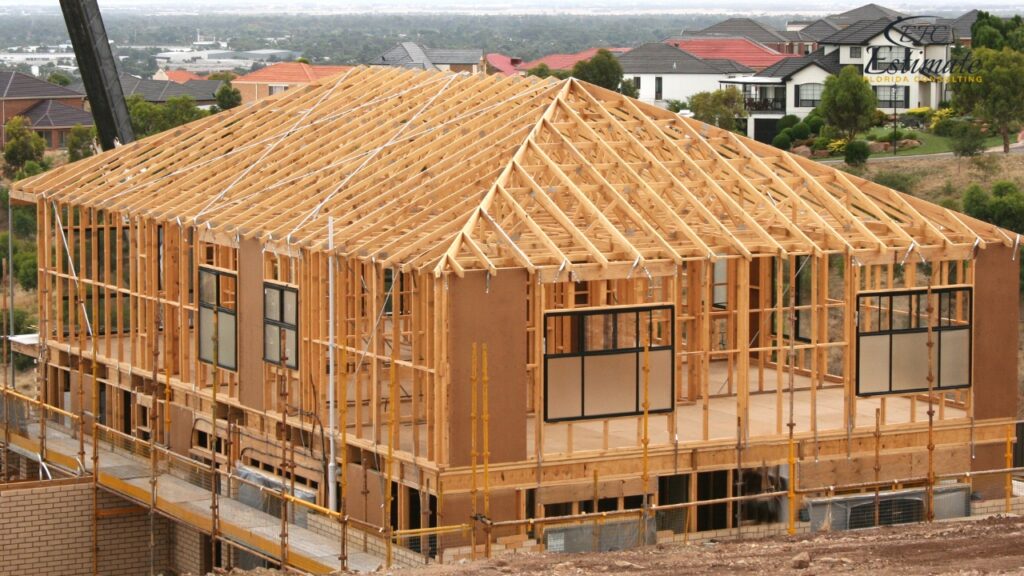
Choosing a House Plan
After selecting the perfect location for your new home, the next critical step is choosing a house plan that aligns with your $200K budget. Given this budget, you might not be aiming for a luxurious mansion, but that doesn’t mean you can’t have a beautiful and functional home. A 2-bedroom house or a charming farmhouse is an excellent choice for staying within your budget while still meeting your needs.
Budget-Friendly Farmhouse Plans
Farmhouses are a fantastic option, especially when you’re working within a budget. Typically, these homes are single-story, making them simpler and more cost-effective to build. Their straightforward design also means you can use affordable materials without sacrificing style. Farmhouses offer a cozy, inviting atmosphere while keeping costs down, making them ideal for a budget of $200K.
Cost-Effective 2-Bedroom House Plans
A 2-bedroom house is another great choice that aligns with budget-friendly guidelines. With fewer rooms, you can reduce the overall square footage, which significantly impacts your total spending. A smaller footprint allows you to manage costs more effectively while still providing all the necessary living spaces.
For example, building a home with 1,200 square feet can keep your total expenses within budget. With an average construction cost of about $199 per square foot, a 1,200 sq. ft. home would cost approximately $238,800. If you opt for a slightly smaller 1,000 sq. ft. home, you could lower your costs to around $199,000, giving you more room in your budget for finishes and other essentials.
Working with an Architect
When planning your home, it’s crucial to hire a reputable architect to design your house plans. The cost for an architect typically runs around $1.95 per square foot. So, for a 1,200 sq. ft. house, you might spend approximately $2,340 on architectural fees. Remember, these fees are an important investment to ensure that your home is well-designed and meets all necessary building codes and regulations.
Regional Cost Variations
It’s important to note that construction costs can vary significantly depending on your location. For instance, building costs per square foot may be higher in states like Connecticut ($223.82), California ($215.35), New York ($214.51), and New Jersey ($211.43). These regional differences should be factored into your planning to ensure your budget is accurate and realistic.
Selecting Cost-Effective Materials
As we mentioned earlier, materials and labor are the biggest contributors to your overall building costs. Choosing the right materials is key to staying within budget without compromising on quality or aesthetics.
Consider using materials like reclaimed wood, brick, concrete, bamboo, and prefabricated elements. These options not only help you save money but also offer durability and a modern, appealing look for your home.
The Garage: To Build or Not to Build
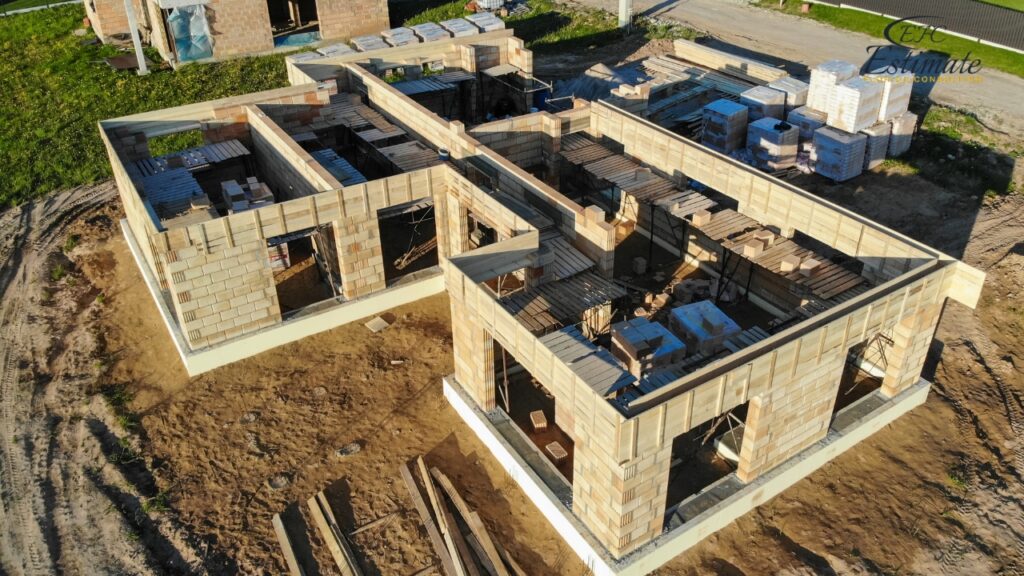
A garage is often seen as a necessity, but when you’re on a tight budget, it’s important to carefully consider how you approach this aspect of your home. The cost to build a garage averages around $64 per square foot, depending on the materials used. A one-car garage could cost you about $18,460, while a two-car garage might range from $25,480 to as much as $36,400. Given your $200K budget, you might decide that a garage is an area where you can cut costs or opt for a smaller, more basic design to save money.
Make Choices Wisely
When building on a budget, every choice you make impacts the overall cost, especially when it comes to design. It’s important to keep things simple and avoid adding extras that will unnecessarily increase expenses. For instance, opting for a basic roof design can significantly cut costs. A simple roof will typically start at around $9,360, so it’s wise to avoid complex designs that drive up the price.
Similarly, your foundation is another area where you can save. Choosing a slab foundation, which costs between $6.50 and $9 per square foot, is a cost-effective choice. Avoid basements, as they can easily push your costs up by $39,000 or more, which can strain your budget.
Select Finishes Carefully
The finishes you choose for your home can quickly add up, so it’s crucial to make thrifty selections. Instead of splurging on high-end materials like granite or marble countertops, consider more affordable yet attractive alternatives like tile or laminate. These options not only save you money but also offer a stylish look. If you need inspiration, check out some creative tiled countertop ideas on Pinterest for budget-friendly options that don’t compromise on style.
Plumbing Considerations
Plumbing costs can also vary widely depending on the number of fixtures and the type of materials you choose. Each toilet, sink, shower, and water heater adds to the overall expense. To keep costs in check, consider minimizing the number of fixtures where possible.
Additionally, opting for PEX pipes instead of copper can save you a substantial amount—potentially around $6,500 compared to using copper pipes.
Budget-Friendly Flooring Options
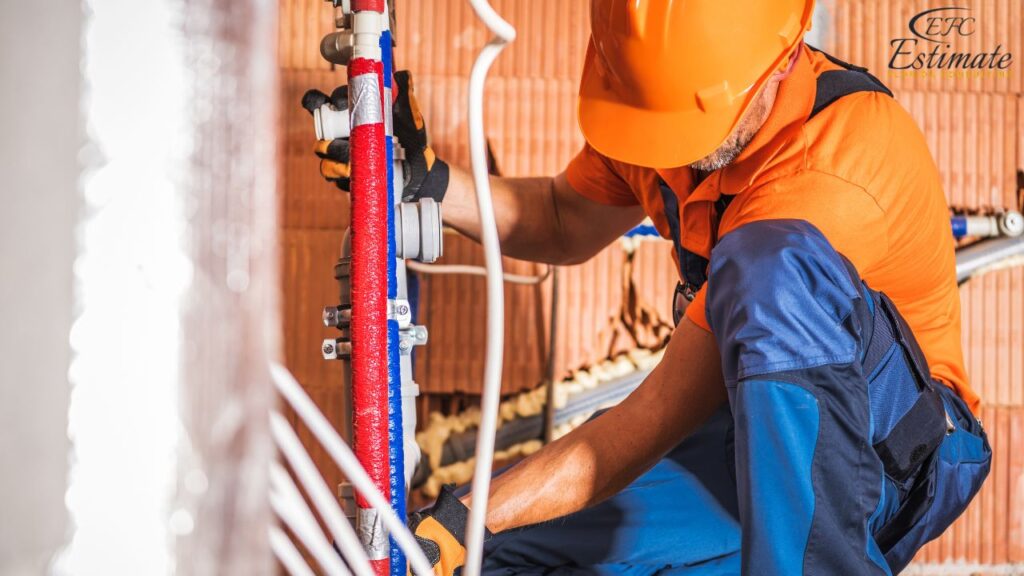
The flooring you select can have a significant impact on your budget. To stay within your financial limits, consider cost-effective options like vinyl planks, vinyl sheets, laminate, or oak wood. These materials offer durability and a pleasing aesthetic without breaking the bank, allowing you to achieve the look you want while keeping costs under control.
Painting on a Budget
Painting is a key element in bringing out the beauty of your new home, but it doesn’t have to be expensive. Choose a reliable painter who offers affordable rates, and opt for good quality but reasonably priced paint. You don’t need to go for the most expensive brands to achieve a beautiful finish. Additionally, using materials like prefabricated panels, stone, or classic brick for your home’s exterior can reduce the need for extensive exterior painting, saving you both time and money.
Electrical Installation
Electrical work is another area that can quickly consume a large portion of your budget. Labor costs alone can range from $52 to $130 per 100 square feet per hour. When you factor in the cost of materials and fixtures, the total could easily reach between $2,600 and $7,800. To manage these costs, consider hiring electricians with competitive rates who have a reputation for quality work. Additionally, keep your electrical fixtures simple and functional to avoid unnecessary expenses.
By making strategic choices in these areas, you can effectively manage your budget while still building a home that meets your needs and reflects your personal style.
Choosing the Right Location for Cost-Effective Building
Understanding the Impact of Location on Building Costs
The location of your new home is one of the most significant factors influencing your overall budget. Building in rural or suburban areas is typically less expensive than in urban centers due to lower land costs and reduced labor rates. Additionally, selecting a location with fewer building regulations can save you money on permits and compliance. Before settling on a site, consider the long-term benefits and costs, such as proximity to work, schools, and amenities, to ensure you’re making a wise investment. It’s also important to consider the future value of the property—locations with expected growth or development can increase the long-term value of your investment. Therefore, balancing upfront costs with potential future benefits is essential when choosing your building location.
Weighing the Pros and Cons of Rural vs. Suburban Locations
For example, rural areas might offer cheaper land, but the cost savings could be offset by higher transportation costs or longer commutes. On the other hand, suburban areas may provide a balance of affordability and convenience, offering lower land prices than urban areas while still being close to necessary amenities. It’s also worth considering the availability of services and utilities in rural areas, as these might be more limited or require additional investment to set up. Balancing these factors is key to making an informed decision that aligns with both your lifestyle and financial goals. Additionally, consider how the location might impact your day-to-day life, including access to healthcare, education, and shopping facilities, as these are crucial for long-term comfort and convenience.
Location Type | Estimated Land Cost |
Rural Area | $13,000 – $32,500 |
Suburban Area | $39,000 – $78,000 |
Urban Area | $91,000 – $195,000 |
90% More Chances to Win Projects With Our Estimate!
- Multi-Family Building
- Hotel Building
- Hospital Building
- Warehouse Building
- School & University Building
- High-Rise Building
- Shopping Complex
- Data Center Building
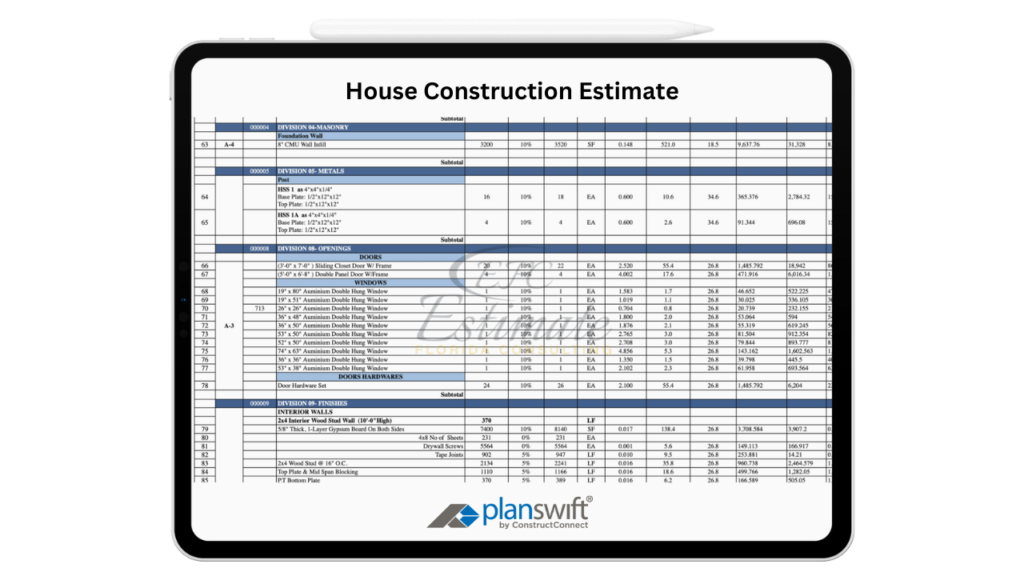
Designing a Simple and Efficient Floor Plan
The Benefits of Simple Home Designs
A well-thought-out floor plan can significantly reduce construction costs, making it easier to stay within your $200K budget. Opting for a simple, rectangular or square design minimizes the complexity of the build, which in turn reduces labor and material expenses. Complex designs with multiple corners or unusual shapes require more materials and labor, which can drive up costs. By sticking to straightforward architectural plans, you can maintain a streamlined budget while still creating a visually appealing and functional home. Additionally, simple designs often result in faster construction times, which can further reduce costs associated with labor and project management. This approach ensures that you maximize your budget while minimizing unnecessary expenditures.
Maximizing Space with Efficient Layouts
Focus on maximizing space efficiency by eliminating unnecessary rooms and hallways. An open-plan living area, for instance, not only saves on construction costs but also creates a modern, spacious feel, which can make a smaller home feel much larger. By carefully considering how you will use each space, you can reduce wasted square footage and ensure that every part of the home serves a purpose. Additionally, by reducing the overall square footage while maintaining functionality, you can further cut costs without sacrificing comfort. For example, combining the living, dining, and kitchen areas into a single open space can reduce the need for additional walls and doors, saving on both materials and labor. This design choice not only lowers costs but also creates a more open and inviting atmosphere, making your home feel more expansive. Moreover, open-plan designs can enhance natural light flow, reducing the need for artificial lighting during the day and further contributing to energy savings.
House Size | Estimated Construction Cost |
1,000 sq ft | $130,000 – $182,000 |
1,200 sq ft | $156,000 – $218,400 |
1,500 sq ft | $195,000 – $273,000 |
Cost-Effective Building Materials and Techniques
Selecting Budget-Friendly Building Materials
Selecting cost-effective building materials is crucial when working with a limited budget. Materials like concrete blocks, which are durable and relatively inexpensive, can be a smart choice for the structure of your home. Concrete blocks offer a good balance between strength and cost, making them ideal for budget-conscious builders. For the exterior, vinyl siding offers a budget-friendly alternative to wood or brick, providing good insulation and low maintenance. Vinyl siding is not only affordable but also resistant to weather and pests, which can help reduce long-term maintenance costs. Additionally, by choosing materials that are readily available in your area, you can save on transportation costs, further reducing your overall building expenses. It’s also beneficial to consider the lifecycle costs of materials, as those with lower maintenance and longer durability can save you money in the long term.
Exploring the Advantages of Modular Construction
Additionally, consider using pre-fabricated or modular construction techniques, which are faster to assemble and often less expensive than traditional on-site building methods. Modular construction involves building sections of the house in a factory setting and then assembling them on-site, which can significantly reduce labor costs and construction time. These choices not only reduce costs but also help to shorten the construction timeline, allowing you to move into your new home more quickly. By researching and choosing materials that offer the best value, you can ensure that every dollar spent contributes to the overall quality and longevity of your home. Moreover, opting for locally sourced materials can further reduce costs by cutting down on transportation expenses and supporting local businesses. This approach not only benefits your budget but also contributes to the local economy, making it a win-win situation. Furthermore, modular construction can offer enhanced quality control, as components are built in a controlled environment, reducing the likelihood of defects and costly repairs later.
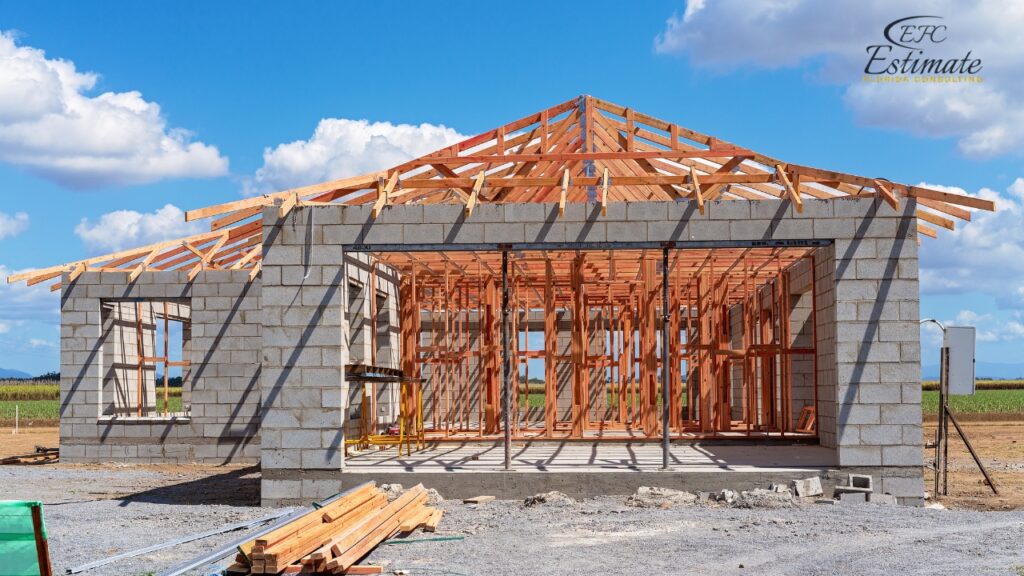
Material Type | Estimated Cost per Sq Ft |
Concrete Blocks | $6.50 – $10.40 |
Vinyl Siding | $2.60 – $6.50 |
Modular Construction | $65.00 – $104.00 |
Working with Contractors: Negotiating and Saving
Tips for Hiring Cost-Effective Contractors
Hiring a contractor is one of the most significant expenses in building a house, but it’s also an area where you can save money with the right approach. Start by getting multiple bids from different contractors to compare prices and services. This competitive bidding process can help you identify the most cost-effective options. Don’t be afraid to negotiate – many contractors are willing to offer discounts for guaranteed work or flexible timelines. Negotiation is a key tool in managing your budget, and being upfront about your financial constraints can lead to better deals and lower overall costs. Additionally, make sure to check the contractor’s references and past work to ensure that you are getting the best value for your money. Choosing a contractor with a strong track record of delivering projects on time and within budget can save you from unexpected expenses and delays.
The Value of a Reliable General Contractor
Additionally, consider hiring a general contractor who can manage subcontractors and materials, ensuring that the project stays on schedule and within budget. A general contractor with a strong network can often secure better rates on materials and labor, passing those savings on to you. Their experience in managing large projects can also help in identifying potential cost-saving opportunities that you might overlook. Building a good relationship with your contractor can also lead to cost savings, as they might be more inclined to help you find efficient solutions if they see you as a reliable and cooperative client.
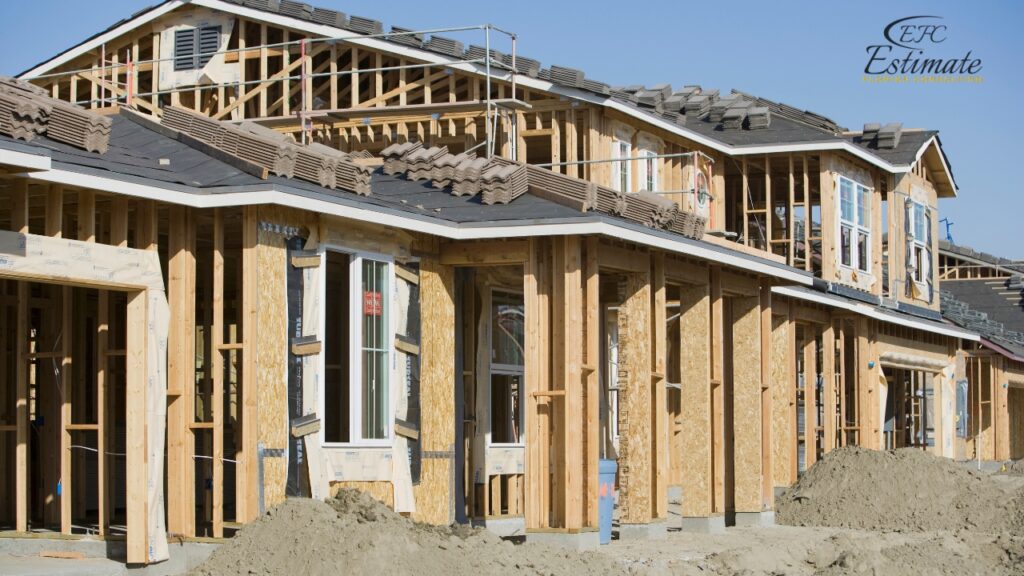
Importance of Clear Contracts to Avoid Cost Overruns
Furthermore, clearly defining the scope of work in the contract can prevent unexpected costs, ensuring that the agreed-upon budget covers all necessary tasks and materials. This level of transparency is essential for maintaining control over your project’s finances and avoiding any unpleasant surprises down the line. Detailed contracts that outline every aspect of the work, from materials to timelines, help ensure that there are no misunderstandings that could lead to additional costs. It’s also advisable to include clauses for handling unexpected expenses, ensuring that any necessary changes are agreed upon and documented before additional costs are incurred. By taking these precautions, you can protect your budget and ensure that the project remains financially viable from start to finish.
Contractor Service | Estimated Cost |
General Contractor Fee | 13% – 26% of total cost |
Subcontractors (Plumbing, Electrical, etc.) | Varies by service |
Affordable Home Building, Budget-Friendly House Construction
Affordable home building is all about making the right choices to keep costs down while ensuring your house meets your needs. This includes selecting budget-friendly materials, minimizing waste, and planning your project to avoid unnecessary expenses. Every decision, from the type of foundation to the choice of finishes, plays a role in determining the final cost of your home. By focusing on these aspects, you can keep your construction costs under $200K and still build a home that is comfortable, efficient, and attractive.
Importance of Clear Contracts to Avoid Cost Overruns
Furthermore, clearly defining the scope of work in the contract can prevent unexpected costs, ensuring that the agreed-upon budget covers all necessary tasks and materials. This level of transparency is essential for maintaining control over your project’s finances and avoiding any unpleasant surprises down the line. Detailed contracts that outline every aspect of the work, from materials to timelines, help ensure that there are no misunderstandings that could lead to additional costs. It’s also advisable to include clauses for handling unexpected expenses, ensuring that any necessary changes are agreed upon and documented before additional costs are incurred. By taking these precautions, you can protect your budget and ensure that the project remains financially viable from start to finish.
Contractor Service | Estimated Cost |
General Contractor Fee | 13% – 26% of total cost |
Subcontractors (Plumbing, Electrical, etc.) | Varies by service |
Balancing Cost and Quality in Home Construction
For example, using energy-efficient materials might cost more upfront but will save you money in the long run through reduced energy bills. Investing in high-quality insulation, windows, and HVAC systems can lower your home’s operating costs, making it more affordable to live in over time. Additionally, opting for a smaller footprint or a simpler design can significantly reduce both material and labor costs, allowing you to allocate more of your budget to high-quality finishes or essential upgrades. By prioritizing what truly matters in your home’s design and construction, you can achieve a balance between cost and quality, resulting in a home that not only meets your financial goals but also provides a comfortable and enjoyable living space. This approach ensures that you don’t compromise on the essential elements that make a house a home, while still maintaining a strict budget.
Leveraging Energy-Efficient Options to Save Long-Term Costs
The Long-Term Benefits of Energy Efficiency
While energy-efficient features might require a slightly higher upfront investment, they can save you money in the long run by reducing utility bills. Consider installing energy-efficient windows, insulation, and appliances. These features not only reduce your energy consumption but also improve the overall comfort of your home by maintaining a stable indoor temperature year-round. Solar panels are another option, which, while initially costly, can significantly reduce your electricity expenses over time and may qualify for tax incentives, further lowering your overall costs. Solar energy systems can also increase the resale value of your home, making them a worthwhile investment even on a tight budget. Additionally, energy-efficient homes tend to have higher resale values, providing a financial return on your investment. When planning your budget, consider these long-term savings as part of your overall financial strategy, ensuring that your home remains affordable to operate even after construction is complete.
Download Template For House Construction Project Breakdown
- Materials list updated to the zip code
- Fast delivery
- Data base of general contractors and sub-contractors
- Local estimators
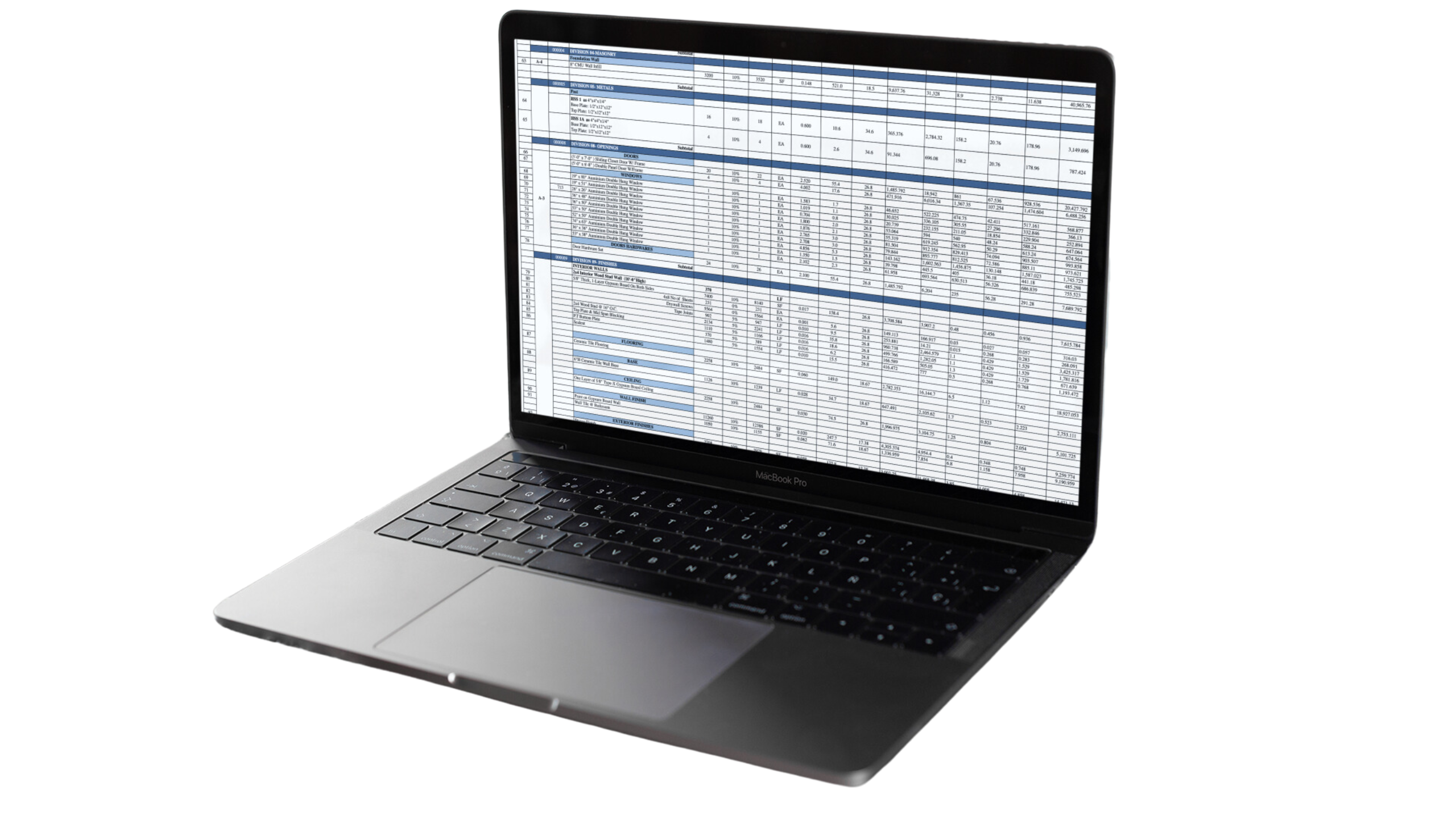
Enhancing Home Value with Energy-Efficient Upgrades
Furthermore, incorporating passive solar design principles, such as strategically placing windows to maximize natural light and heat during winter months, can enhance energy efficiency without adding significant costs to your construction budget. Passive solar design is a cost-effective way to reduce heating and cooling costs by utilizing the natural energy of the sun. This thoughtful approach to energy efficiency not only benefits your wallet but also contributes to a more sustainable and environmentally friendly home. By carefully selecting and implementing energy-efficient features, you can create a home that is both affordable to maintain and environmentally responsible, offering long-term savings and a smaller carbon footprint. This combination of cost savings and sustainability makes energy-efficient upgrades a smart choice for any new home construction.
Energy-Efficient Feature | Estimated Upfront Cost |
Energy-Efficient Windows | $6,500 – $13,000 |
High-Quality Insulation | $2,600 – $6,500 |
Solar Panels | $19,500 – $32,500 |
Soft Costs to Build a House: Understanding the Hidden Expenses
Recognizing and Planning for Soft Costs
Soft costs, often referred to as hidden expenses, include everything from permits and inspections to design fees and utility hookups. These costs can add up quickly and take a significant portion of your budget if not carefully managed. Permits and fees are essential to ensure that your project meets local building codes and regulations, but they can also be a source of unexpected expenses if not planned for. It’s essential to account for these in your initial budget planning to avoid surprises later in the project. By thoroughly researching the necessary permits and their associated costs, you can better prepare for these expenses and include them in your overall budget from the start.
Importance of Including a Contingency Fund
For instance, obtaining the necessary permits can sometimes take longer and cost more than anticipated, especially in areas with strict building codes. Delays in permitting can also push back your construction schedule, leading to additional costs for labor and materials. Additionally, connecting your home to utilities like water, electricity, and sewage can involve unexpected fees, such as charges for extending service lines or installing new meters. By researching and planning for these soft costs early in the process, you can ensure that your budget remains intact throughout the construction phase. It’s also important to set aside a contingency fund within your budget for any unforeseen expenses, such as additional site work or changes to the design that may arise during the construction process. This proactive approach helps to mitigate financial risks and keeps your project on track, ensuring that you have the necessary resources to handle any challenges that arise without jeopardizing your budget.
Soft Costs | Estimated Cost |
Building Permits | $1,950 – $3,900 |
Utility Hookups | $2,600 – $5,200 |
Design and Engineering Fees | $3,900 – $9,100 |
Financing Options for Building a House Under $200K
Exploring Various Financing Options
Securing the right financing is critical to ensuring your home-building project stays on budget. Options include traditional mortgages, construction loans, and personal loans. Each of these options has its own set of benefits and drawbacks, so it’s important to choose the one that best fits your financial situation and project timeline. Some lenders offer specialized loans for construction projects, which provide funds based on the completion stages of the build. These loans can be particularly advantageous as they allow you to pay for construction costs as they arise, rather than in a lump sum, helping you manage cash flow more effectively. Exploring these options and choosing the one that best fits your financial situation can help you manage costs effectively throughout the construction process.
Benefits of Construction Loans and Government Programs
For example, construction loans often have lower interest rates than personal loans and can be tailored to your building schedule, disbursing funds as needed rather than in a lump sum. This flexibility allows you to better align your loan payments with the actual progress of your construction, reducing the financial strain during the building phase. Additionally, some government programs offer favorable terms for first-time homebuilders or those building in rural areas, providing further financial flexibility. These programs may offer lower interest rates, reduced down payments, or grants to assist with the cost of construction, making them an excellent option for budget-conscious builders.

Understanding the nuances of these financing options will enable you to choose the one that best supports your budget and project timeline, ensuring that you can build your home without financial strain. By securing the right financing, you can focus on the construction process with confidence, knowing that your financial needs are covered.
Financing Option | Interest Rate |
Construction Loan | 4.5% – 6.0% |
FHA 203(k) Loan | 3.5% – 5.0% |
Personal Loan | 5.0% – 10.0% |
How to Calculate Square Footage Costs for Budget Management
Steps to Accurately Calculate Square Footage Costs
Calculating the cost per square foot is a straightforward method to manage your construction budget. This calculation involves dividing the total construction cost, including all materials, labor, and soft costs, by the total square footage of the house. This will give you a clear idea of where your money is going and help you identify areas where you might be able to save. By breaking down costs in this way, you can make informed decisions about where to allocate your budget and where to potentially cut back. For example, if certain areas of the house, such as the kitchen or bathrooms, are driving up the cost per square foot, you might consider simplifying the design or choosing more affordable materials to bring the overall cost down.
Identifying Areas for Cost Reduction
For example, if you find that a significant portion of your budget is being spent on a particular area, such as high-end flooring or custom cabinetry, you can explore more affordable alternatives without compromising on quality. This approach allows you to keep a close eye on costs and make informed decisions throughout the building process. Additionally, by regularly reviewing your cost per square foot during construction, you can stay proactive in identifying potential savings opportunities before they impact your overall budget. This ongoing analysis ensures that your project remains financially viable and that any necessary adjustments can be made in real-time, preventing budget overruns and ensuring a successful outcome.
Leveraging Cost Per Square Foot for Negotiations with Contractors
Using Cost Data to Negotiate Contractor Fees
Understanding your cost per square foot is not only crucial for budgeting but also a powerful tool when negotiating with contractors. Armed with this knowledge, you can enter negotiations with confidence, knowing what you should expect to pay based on industry standards and your specific project requirements. By having a clear understanding of your expected costs, you can confidently discuss pricing and ensure that you’re getting the best deal possible. This level of understanding also allows you to identify when a contractor’s bid may be inflated, giving you the opportunity to ask for a more detailed breakdown of costs or negotiate a lower price.
Ensuring Fair Pricing and Quality Work
This knowledge can help you avoid overpaying and ensure that your project stays within its financial limits. For instance, if a contractor’s bid comes in significantly higher than your calculated cost per square foot, you can question the pricing and ask for a breakdown of the costs. This transparency can lead to more competitive pricing and potentially lower overall construction costs. Additionally, by discussing cost per square foot with your contractor, you can set clear expectations for the quality of work and materials, ensuring that you receive the best possible value for your investment. Leveraging this data during negotiations helps build a partnership with your contractor that is based on trust and mutual understanding, ultimately leading to a smoother construction process and a successful project.
Conclusion
Building a house for under $200K is achievable with careful planning, smart material choices, and efficient design. By understanding the various costs involved and leveraging cost-effective strategies, you can create a home that meets your needs without exceeding your budget. At Estimate Florida Consulting, we specialize in providing accurate estimates and budget planning services tailored to your specific needs, helping you turn your dream home into a reality without breaking the bank. Our expertise in managing construction costs ensures that you get the most value for your investment, allowing you to enjoy your new home without financial stress. Through a combination of thoughtful design, strategic planning, and effective negotiation, you can build a beautiful, functional home that aligns with your financial goals and provides lasting value for years to come.
FAQs
Yes, building a house for under $200K is achievable with careful planning and smart decision-making. By selecting cost-effective materials, working with experienced contractors, and choosing a location with lower land costs, you can build a home that meets your needs without exceeding your budget.
Location plays a significant role in the overall cost. Building in rural or suburban areas is often more affordable than in urban centers due to lower land prices and reduced labor costs. However, it’s important to consider factors like access to amenities, transportation costs, and future property value when choosing a location.
- Rural Area: $13,000 – $32,500
- Suburban Area: $39,000 – $78,000
- Urban Area: $91,000 – $195,000
Opt for a simple and efficient floor plan. Choosing a rectangular or square design can minimize construction complexity and costs. Focus on maximizing space efficiency by eliminating unnecessary rooms and opting for open-plan layouts, which save on both materials and labor.
- 1,000 sq ft: $130,000 – $182,000
- 1,200 sq ft: $156,000 – $218,400
- 1,500 sq ft: $195,000 – $273,000
- Concrete Blocks: $6.50 – $10.40 per sq ft
- Vinyl Siding: $2.60 – $6.50 per sq ft
- Modular Construction: $65.00 – $104.00 per sq ft
Choosing durable, budget-friendly materials like concrete blocks and vinyl siding can help you stay within your budget while ensuring long-term savings on maintenance.
Modular construction is a cost-effective and time-efficient option. Sections of the house are built in a factory and assembled on-site, reducing labor costs and construction time. This method also offers enhanced quality control, as components are built in a controlled environment.
- Get Multiple Bids: Compare prices and services from different contractors.
- Negotiate: Don’t hesitate to ask for discounts, especially if you can offer a flexible timeline or guarantee work.
- Hire a General Contractor: A reliable general contractor can manage subcontractors and materials, often securing better rates and ensuring the project stays on budget.
- General Contractor Fee: 13% – 26% of the total cost
- Subcontractors (Plumbing, Electrical, etc.): Varies by service
Investing in energy-efficient features like high-quality insulation, energy-efficient windows, and solar panels can reduce utility bills and improve home comfort. While these upgrades may require a higher upfront investment, they offer long-term savings and can increase the resale value of your home.
Google Reviews

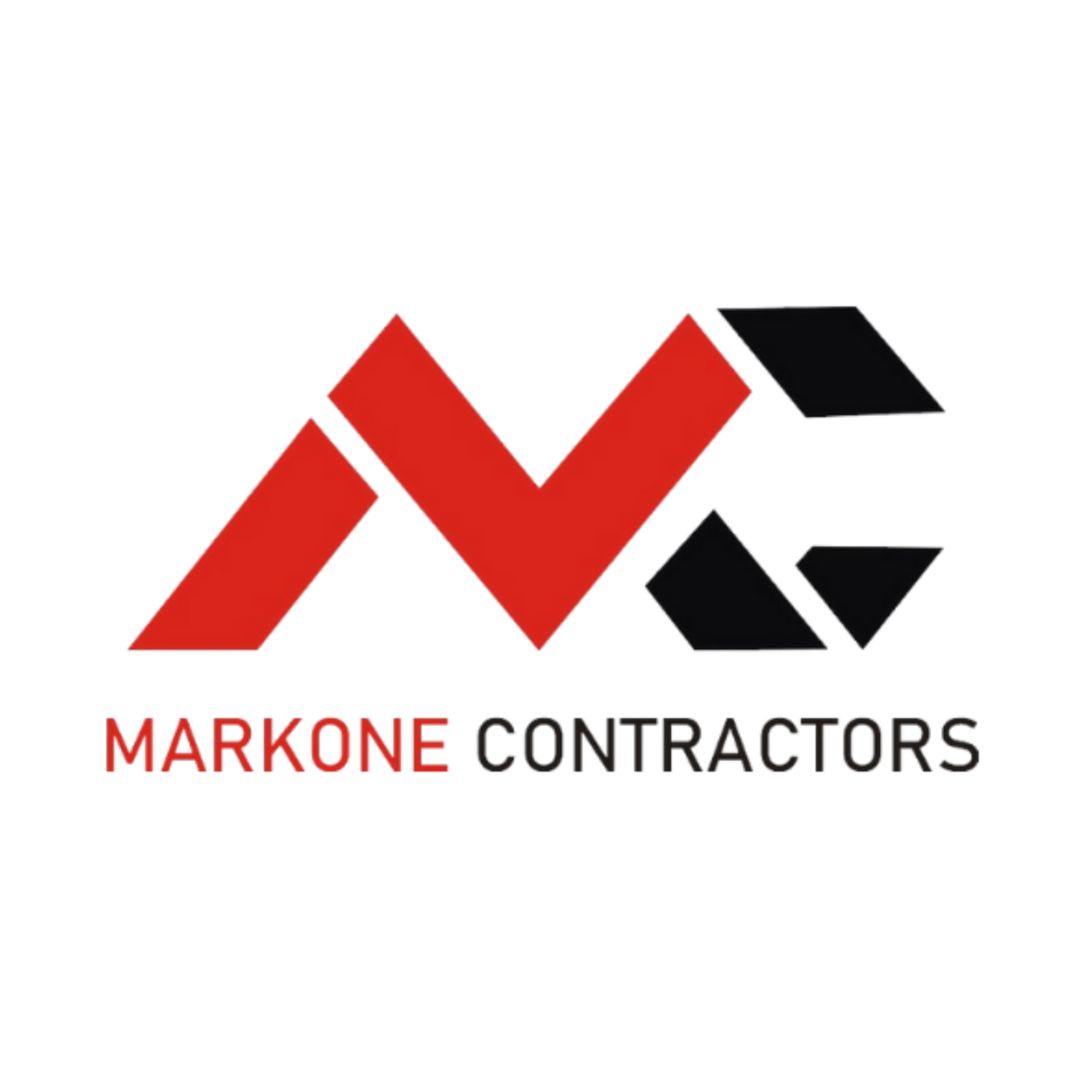

Process To Get House Construction Estimate Report
Here I am going to share some steps to get house construction estimate report.
-
You need to send your plan to us.
You can send us your plan on info@estimatorflorida.com
-
You receive a quote for your project.
Before starting your project, we send you a quote for your service. That quote will have detailed information about your project. Here you will get information about the size, difficulty, complexity and bid date when determining pricing.
-
Get Estimate Report
Our team will takeoff and estimate your project. When we deliver you’ll receive a PDF and an Excel file of your estimate. We can also offer construction lead generation services for the jobs you’d like to pursue further.

